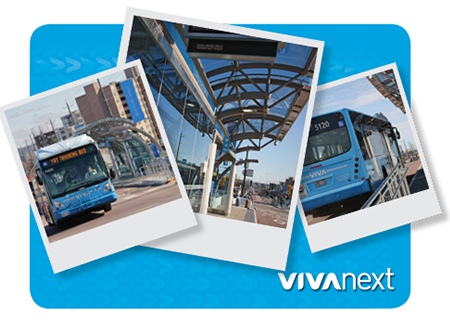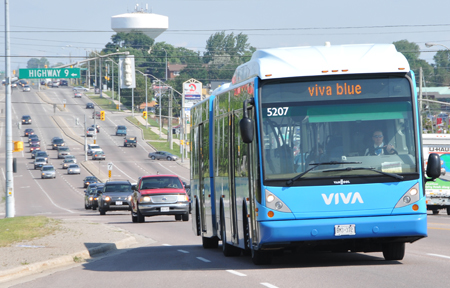Have you recently travelled along Davis Drive from Yonge Street to Roxborough? It’s looking great! We’re very close to making the new bus rapid transit services available to you. What lies ahead is testing.
The testing stage – known in the construction world as commissioning – is critically important to ensure that all parts of the rapidway are ready for active service.
Here’s what’s involved
commissioning
In the case of vivaNext, commissioning involves reviewing every part of the rapidway system, including structural components and the overall communications network, to ensure that they are working the way that we’ve designed them to.
Intelligent Transportation Systems [ITS]
ITS is an international transportation-engineering discipline that aims to make all kinds of travel more efficient. You may not be able to see it, but ITS technology is a critical component of the vivaNext rapid transit project.
In general, ITS ensures that traffic corridors are designed as one coordinated system, which includes the physical roadway’s design, lane markings and signs, traffic signal design and timing, and the brains that connect all these pieces. On the vivaNext rapid transit corridors, ITS plays another role too – integrating the rapid transit system into the overall traffic corridor system.
communications network
The communications network includes the fare collection equipment; the station information systems such as variable message signs [VMS], clocks and public address [PA] systems; the passenger security elements such as closed circuit TV systems and emergency call buttons; and the traffic signals at intersections. It also includes the sophisticated Transit Vehicle Detection system, which informs traffic signals when rapid transit vehicles are approaching intersections. Finally, the overall communications network includes the fibre optic network that links all of its components.
testing, testing, testing
Testing starts at the factory, where the fabricator verifies that the equipment works as intended. Each component is then tested again when it’s installed. After this, a series of additional tests are carried out to confirm that the entire system is integrated properly and working together.
The final step involves testing the reliability and function of the system, including simulating actual operation using buses, and staff who act as passengers. This gives the people who will be involved in the future operation, maintenance and service of the rapidway an opportunity to become familiar with it.
Even though you can see construction is coming along, there’s still testing, testing, and more testing to be done before the Davis Drive rapidway opens in December. All this testing is important though; it will ensure that rapid transit on Davis Drive is as safe and efficient as possible.


